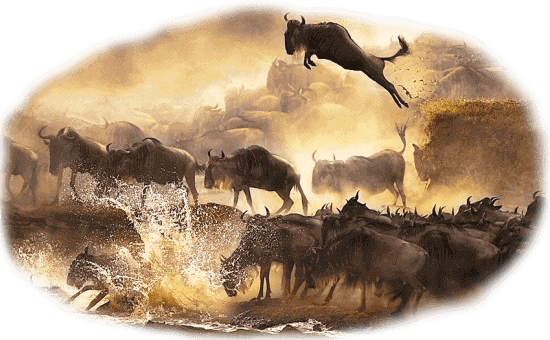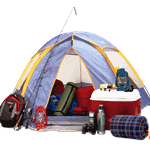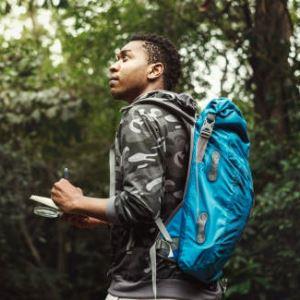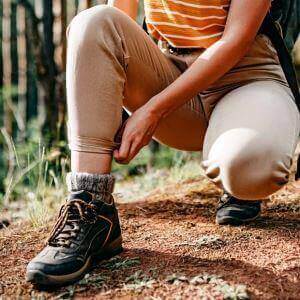 Kenya, often referred to as the jewel of East Africa, offers Australian travellers a captivating blend of wildlife encounters, vibrant cultures, and stunning landscapes. Whether you’re dreaming of witnessing the Great Migration, relaxing on pristine beaches, or exploring bustling markets, Kenya delivers an adventure that’s as diverse as it is unforgettable. One of Kenya’s most celebrated attractions is its extraordinary wildlife. For many Australians, a safari in the Maasai Mara is the ultimate highlight. This world-renowned reserve is home to the Big Five; lion, elephant, buffalo, leopard, and rhino; and offers front-row seats to nature’s greatest show: the annual Great Migration. Between July and October, millions of wildebeest and zebras thunder across the savannah, an awe-inspiring sight that draws photographers and nature lovers from around the world. Amboseli National Park, with its iconic views of Mount Kilimanjaro, and Tsavo National Park, famous for its red-dusted elephants, are also must-visit destinations. Beyond the safari experience, Kenya’s coast offers a different kind of magic. After days in the bush, Australians can unwind along the white sands of Diani Beach or Lamu Island, where the Indian Ocean’s turquoise waters invite snorkelling, diving, and dhow sailing. These coastal regions also showcase Kenya’s Swahili heritage, blending African, Arab, and European influences in architecture, cuisine, and traditions. Kenya’s cultural richness is another reason to visit. From the Maasai and Samburu tribes with their vibrant attire and traditions to Nairobi’s contemporary art and food scene, travellers can immerse themselves in both ancient customs and modern creativity. Visiting local markets, trying ugali (a maize-based staple), or enjoying nyama choma (grilled meat) are all part of the authentic Kenyan experience. For Australian tourists, preparation is key to making the most of a Kenyan adventure. First, ensure your passport is valid for at least six months from your date of arrival, and apply for an eVisa before departure. Vaccinations, including yellow fever and routine travel immunisations, are strongly recommended; consult your doctor well in advance. Malaria prophylaxis is also advisable, especially for safari regions. In terms of climate, Kenya’s weather can vary greatly depending on the region and season. The dry seasons; January to March and July to October; are generally considered the best times for wildlife viewing. Australians should remember that Kenya’s seasons are opposite to Australia’s; planning your trip around these periods can maximise your chances of seeing wildlife in abundance. When it comes to transport, flying into Nairobi or Mombasa is the most common route for Australians, with connecting flights from hubs like Dubai, Doha, or Singapore. Within Kenya, domestic flights can save time between distant regions, though overland travel offers its own scenic rewards. Respect for local customs goes a long way. Dress modestly in rural areas, always ask before photographing people, and consider supporting community-based tourism initiatives that give back to local populations. With its breathtaking wildlife, rich cultural tapestry, and warm hospitality, Kenya offers Australian tourists an adventure that’s both enriching and exhilarating. Whether you’re tracking lions on the savannah or watching the sun set over the Indian Ocean, the memories you make in Kenya will last a lifetime.
Kenya, often referred to as the jewel of East Africa, offers Australian travellers a captivating blend of wildlife encounters, vibrant cultures, and stunning landscapes. Whether you’re dreaming of witnessing the Great Migration, relaxing on pristine beaches, or exploring bustling markets, Kenya delivers an adventure that’s as diverse as it is unforgettable. One of Kenya’s most celebrated attractions is its extraordinary wildlife. For many Australians, a safari in the Maasai Mara is the ultimate highlight. This world-renowned reserve is home to the Big Five; lion, elephant, buffalo, leopard, and rhino; and offers front-row seats to nature’s greatest show: the annual Great Migration. Between July and October, millions of wildebeest and zebras thunder across the savannah, an awe-inspiring sight that draws photographers and nature lovers from around the world. Amboseli National Park, with its iconic views of Mount Kilimanjaro, and Tsavo National Park, famous for its red-dusted elephants, are also must-visit destinations. Beyond the safari experience, Kenya’s coast offers a different kind of magic. After days in the bush, Australians can unwind along the white sands of Diani Beach or Lamu Island, where the Indian Ocean’s turquoise waters invite snorkelling, diving, and dhow sailing. These coastal regions also showcase Kenya’s Swahili heritage, blending African, Arab, and European influences in architecture, cuisine, and traditions. Kenya’s cultural richness is another reason to visit. From the Maasai and Samburu tribes with their vibrant attire and traditions to Nairobi’s contemporary art and food scene, travellers can immerse themselves in both ancient customs and modern creativity. Visiting local markets, trying ugali (a maize-based staple), or enjoying nyama choma (grilled meat) are all part of the authentic Kenyan experience. For Australian tourists, preparation is key to making the most of a Kenyan adventure. First, ensure your passport is valid for at least six months from your date of arrival, and apply for an eVisa before departure. Vaccinations, including yellow fever and routine travel immunisations, are strongly recommended; consult your doctor well in advance. Malaria prophylaxis is also advisable, especially for safari regions. In terms of climate, Kenya’s weather can vary greatly depending on the region and season. The dry seasons; January to March and July to October; are generally considered the best times for wildlife viewing. Australians should remember that Kenya’s seasons are opposite to Australia’s; planning your trip around these periods can maximise your chances of seeing wildlife in abundance. When it comes to transport, flying into Nairobi or Mombasa is the most common route for Australians, with connecting flights from hubs like Dubai, Doha, or Singapore. Within Kenya, domestic flights can save time between distant regions, though overland travel offers its own scenic rewards. Respect for local customs goes a long way. Dress modestly in rural areas, always ask before photographing people, and consider supporting community-based tourism initiatives that give back to local populations. With its breathtaking wildlife, rich cultural tapestry, and warm hospitality, Kenya offers Australian tourists an adventure that’s both enriching and exhilarating. Whether you’re tracking lions on the savannah or watching the sun set over the Indian Ocean, the memories you make in Kenya will last a lifetime.
Kenya Travel Quick Tips for Australian Visitors
| Topic | Key Tips |
|---|---|
| Best Time to Visit | Dry seasons (Jun–Oct, Jan–Feb) are ideal for safaris and clear skies. |
| Top Safari Destinations | Maasai Mara, Amboseli (Kilimanjaro views), Tsavo East & West for fewer crowds. |
| Cultural Etiquette | Greet with “Jambo,” dress modestly in rural areas, ask before photos, tip for good service. |
| Safety & Health | Use trusted transport, check advisories, malaria precautions, bottled/filtered water, travel insurance. |
Best Time to Visit Kenya for Australian Travellers and Weather Guide
Kenya, with its breathtaking savannahs, diverse wildlife, and vibrant culture, is a dream destination for many Australian travellers. From the world-famous Maasai Mara to the white-sand beaches of Diani, the country offers a variety of experiences throughout the year. However, the best time to visit depends largely on what you hope to see and do, as Kenya's weather patterns influence wildlife activity, scenery, and travel conditions. For Australians, who typically experience opposite seasons to Kenya, planning around the local climate can make all the difference. Kenya enjoys a generally warm, tropical climate, but regional variations are significant due to its varied geography. Broadly, the country has two main rainy seasons: the "long rains" from March to May and the "short rains" in November and early December. The driest and sunniest months are January and February, as well as from late June to October. If your goal is to witness the awe-inspiring Great Migration in the Maasai Mara, the best period is between July and October. During these months, vast herds of wildebeest and zebra move across the Serengeti-Mara ecosystem in search of fresh grazing. Wildlife viewing is also excellent during the dry season, as animals tend to gather around limited water sources, making them easier to spot. For Australians escaping the winter back home in June, July, and August, this period aligns perfectly with Kenya's prime safari season. Beach lovers, on the other hand, may prefer visiting between January and March or from late September to early December. During these months, coastal areas such as Mombasa, Malindi, and Lamu enjoy hot, sunny weather with calm seas ideal for snorkelling, diving, and other water sports. Australians visiting at the start of the year can enjoy Kenya's summer warmth while leaving behind the southern hemisphere's post-holiday lull. Those interested in birdwatching should consider travelling between November and April, when migratory species from Europe and Asia arrive. This period coincides with the short rains and the beginning of the long rains, so landscapes are lush and vibrant, although some remote roads can become muddy and harder to navigate. For Australians, this can be a great option if travelling during the end-of-year holiday period or the early months of the year. One important note for Australian travellers is that Kenya's equatorial sun can be intense year-round, particularly at higher altitudes and along the coast. Packing sunscreen, light but protective clothing, and a wide-brimmed hat is essential regardless of the season. The best time to visit Kenya depends on your travel goals. For safaris and the Great Migration, July to October is ideal. For beach relaxation and water activities, January to March and late September to early December offer perfect conditions. Bird enthusiasts will enjoy November to April. By aligning your trip with Kenya's weather patterns, Australian travellers can ensure a memorable and comfortable experience, whether spotting lions on the savannah, exploring bustling markets, or lounging on pristine beaches.
When Should Australians Visit Kenya for the Best Safari Weather
For Australians seeking an unforgettable safari experience, Kenya stands as one of the world’s most captivating destinations. From the sweeping savannahs of the Maasai Mara to the vast landscapes of Amboseli, Kenya offers a rich variety of wildlife encounters set against stunning natural backdrops. But as any seasoned traveller knows, timing is everything when it comes to making the most of your adventure. Choosing the right season can mean the difference between exceptional game viewing and a less-than-ideal safari. Kenya’s climate is shaped by its equatorial location, but its varied altitudes and landscapes mean conditions differ across regions. Generally, the country experiences two dry seasons and two rainy seasons. For Australians, who often plan long-haul trips well in advance, understanding these weather patterns is essential. The long dry season, from late June to October, is widely regarded as the prime time for safaris. This period coincides with the Great Migration, one of nature’s most spectacular events, when millions of wildebeest, zebras, and gazelles traverse the plains in search of fresh grazing. The dry weather means animals tend to congregate around waterholes, making them easier to spot. For Australians, this season conveniently aligns with the winter months back home, offering an ideal escape from the chill to enjoy warm, sunny days in Kenya. The short dry season, from January to February, is another excellent window for wildlife viewing. During these months, the vegetation is less dense, and animals are more visible. It is also the calving season for many species, providing extraordinary opportunities to witness young animals taking their first steps. This period falls in the Australian summer holidays, making it convenient for families looking to combine a Christmas getaway with an immersive wildlife experience. Kenya’s rainy seasons occur from March to May (long rains) and November to early December (short rains). While these months bring lush, green landscapes and fewer tourists, heavy rains can make some roads impassable and wildlife harder to spot due to thick vegetation. However, birdwatchers may find these seasons rewarding, as migratory birds arrive in large numbers. Australians planning a Kenyan safari should aim for the long dry season (June to October) or the short dry season (January to February) for the best combination of comfortable weather and outstanding wildlife viewing. These periods not only align well with Australian seasonal breaks but also offer the most consistent conditions for exploring Kenya’s incredible national parks and reserves. By choosing the right time, travellers can ensure their safari is not just a trip, but a once-in-a-lifetime experience.
Top Kenya Safari Destinations Popular with Australian Visitors
 Kenya remains one of the world’s most sought-after safari destinations, drawing adventurers and nature lovers from across the globe. Among these travelers, Australians have shown a growing interest in experiencing Kenya’s diverse landscapes, abundant wildlife, and rich cultural heritage. From the sweeping savannahs to the shimmering lakes, Kenya offers an unforgettable safari experience that perfectly aligns with Australians’ love for the outdoors and adventure. Here are some of the top safari destinations in Kenya that have become particularly popular with visitors from Australia. The Maasai Mara National Reserve is arguably the crown jewel of Kenya’s safari circuit. Known for its vast grasslands, dramatic sunsets, and dense concentrations of wildlife, it offers an iconic African safari experience. Australians, many of whom are drawn to nature photography and epic wildlife encounters, find the Mara irresistible. The reserve is especially famous for the Great Migration, where over a million wildebeest and zebras cross from Tanzania’s Serengeti in search of greener pastures. This natural spectacle, best viewed between July and October, is often a bucket-list experience for Australian travelers. Amboseli National Park is another favorite, renowned for its breathtaking views of Mount Kilimanjaro across the border in Tanzania. The park is home to large herds of elephants, and sightings here are almost guaranteed. Australians often remark on the surreal beauty of seeing elephants roam against the backdrop of Africa’s tallest mountain. Amboseli’s diverse habitats, including swamps, woodlands, and open plains, offer a range of wildlife viewing opportunities, from predators like lions and cheetahs to a wide variety of bird species. Lake Nakuru National Park offers a completely different safari experience, appealing to Australians interested in birdwatching and unique landscapes. The park is famous for its large flocks of flamingos that turn the lake’s shoreline into a pink spectacle, as well as for its thriving populations of both black and white rhinos. For Australians used to their own vibrant birdlife back home, Lake Nakuru’s diversity adds an extra layer of fascination. For those seeking a more remote and exclusive experience, Samburu National Reserve in northern Kenya is a standout choice. Australians who enjoy venturing off the beaten path appreciate Samburu’s rugged beauty and its unique species found only in the northern regions, such as the reticulated giraffe, Grevy’s zebra, and Somali ostrich. The reserve is also deeply connected to the culture of the Samburu people, offering visitors a chance to engage with local traditions and lifestyles. Tsavo National Park, split into Tsavo East and Tsavo West, is another top destination. Australians often enjoy combining a visit to Tsavo with a beach holiday on Kenya’s Indian Ocean coastline. The park is known for its vast size, dramatic scenery, and the legendary “man-eaters” of Tsavo, two lions that became infamous in the late 19th century. Today, Tsavo remains a haven for elephants, big cats, and other large mammals. From the iconic Maasai Mara to the remote beauty of Samburu, Kenya offers Australians a safari experience rich in diversity, adventure, and unforgettable moments. Whether it’s witnessing the Great Migration, spotting rare species, or exploring vast wilderness areas, Kenya’s safari destinations continue to captivate Australian hearts and inspire return visits.
Kenya remains one of the world’s most sought-after safari destinations, drawing adventurers and nature lovers from across the globe. Among these travelers, Australians have shown a growing interest in experiencing Kenya’s diverse landscapes, abundant wildlife, and rich cultural heritage. From the sweeping savannahs to the shimmering lakes, Kenya offers an unforgettable safari experience that perfectly aligns with Australians’ love for the outdoors and adventure. Here are some of the top safari destinations in Kenya that have become particularly popular with visitors from Australia. The Maasai Mara National Reserve is arguably the crown jewel of Kenya’s safari circuit. Known for its vast grasslands, dramatic sunsets, and dense concentrations of wildlife, it offers an iconic African safari experience. Australians, many of whom are drawn to nature photography and epic wildlife encounters, find the Mara irresistible. The reserve is especially famous for the Great Migration, where over a million wildebeest and zebras cross from Tanzania’s Serengeti in search of greener pastures. This natural spectacle, best viewed between July and October, is often a bucket-list experience for Australian travelers. Amboseli National Park is another favorite, renowned for its breathtaking views of Mount Kilimanjaro across the border in Tanzania. The park is home to large herds of elephants, and sightings here are almost guaranteed. Australians often remark on the surreal beauty of seeing elephants roam against the backdrop of Africa’s tallest mountain. Amboseli’s diverse habitats, including swamps, woodlands, and open plains, offer a range of wildlife viewing opportunities, from predators like lions and cheetahs to a wide variety of bird species. Lake Nakuru National Park offers a completely different safari experience, appealing to Australians interested in birdwatching and unique landscapes. The park is famous for its large flocks of flamingos that turn the lake’s shoreline into a pink spectacle, as well as for its thriving populations of both black and white rhinos. For Australians used to their own vibrant birdlife back home, Lake Nakuru’s diversity adds an extra layer of fascination. For those seeking a more remote and exclusive experience, Samburu National Reserve in northern Kenya is a standout choice. Australians who enjoy venturing off the beaten path appreciate Samburu’s rugged beauty and its unique species found only in the northern regions, such as the reticulated giraffe, Grevy’s zebra, and Somali ostrich. The reserve is also deeply connected to the culture of the Samburu people, offering visitors a chance to engage with local traditions and lifestyles. Tsavo National Park, split into Tsavo East and Tsavo West, is another top destination. Australians often enjoy combining a visit to Tsavo with a beach holiday on Kenya’s Indian Ocean coastline. The park is known for its vast size, dramatic scenery, and the legendary “man-eaters” of Tsavo, two lions that became infamous in the late 19th century. Today, Tsavo remains a haven for elephants, big cats, and other large mammals. From the iconic Maasai Mara to the remote beauty of Samburu, Kenya offers Australians a safari experience rich in diversity, adventure, and unforgettable moments. Whether it’s witnessing the Great Migration, spotting rare species, or exploring vast wilderness areas, Kenya’s safari destinations continue to captivate Australian hearts and inspire return visits.
Where Should Australians Go for the Best Wildlife Experience in Kenya
Kenya is a dream destination for wildlife enthusiasts, offering some of the most diverse and breathtaking natural experiences in the world. For Australians eager to witness Africa's iconic animals in their natural habitat, Kenya offers unparalleled safari opportunities. From the vast savannahs teeming with the Big Five to the dramatic landscapes dotted with unique bird species, this East African nation promises unforgettable adventures. Here are the top spots Australians should consider when planning their ultimate wildlife journey in Kenya.
- Maasai Mara National Reserve: Famous for the Great Migration, the Maasai Mara is one of the world's most spectacular wildlife arenas. Each year, millions of wildebeest, zebras, and gazelles traverse its plains, followed by predators in thrilling pursuits. Visitors can enjoy game drives, hot-air balloon safaris, and cultural encounters with the Maasai people. The abundance of wildlife here means sightings of lions, leopards, elephants, and more are almost guaranteed, making it a must-visit for any Australian traveler.
- Amboseli National Park: Set against the majestic backdrop of Mount Kilimanjaro, Amboseli is renowned for its large elephant herds and breathtaking scenery. Photographers love the park for its iconic images of elephants with Africa's highest peak looming in the distance. In addition to elephants, visitors can spot buffalo, cheetahs, giraffes, and an impressive array of birdlife. The park's open terrain makes wildlife viewing easy, and its proximity to Nairobi means it's a convenient choice for shorter safaris.
- Lake Nakuru National Park: A haven for bird lovers, Lake Nakuru is most famous for its flocks of pink flamingos that blanket the shoreline. Beyond its avian spectacle, the park is home to rhinos, lions, and waterbucks. The picturesque lake and surrounding acacia forest create a serene environment for game drives and photography. Lake Nakuru is also a key site for conservation, particularly for endangered black and white rhinos, making it both a beautiful and meaningful destination.
- Tsavo National Parks (East and West): Together, Tsavo East and Tsavo West form one of the largest wildlife reserves in the world. Known for its red-dust elephants, dramatic landscapes, and the Yatta Plateau, Tsavo offers a more rugged, less-crowded safari experience. Wildlife includes lions, leopards, crocodiles, and countless bird species. Tsavo West features Mzima Springs, where clear waters allow visitors to see hippos and fish up close. This expansive region is perfect for Australians seeking a true wilderness adventure.
For Australians seeking the ultimate wildlife experience, Kenya delivers a mix of iconic landscapes, diverse ecosystems, and unparalleled animal encounters. Whether it's the drama of the Maasai Mara's migration, the serene beauty of Lake Nakuru, the photographic perfection of Amboseli, or the wild expanse of Tsavo, each location offers its own unique magic. Pairing these destinations allows travelers to witness the full spectrum of Kenya's natural wonders. For an unforgettable adventure that blends nature, culture, and conservation, Kenya stands unmatched as a safari destination.
Kenyan Culture and Local Etiquette Tips for Australian Tourists
Kenya is a vibrant country with a rich tapestry of cultures, languages, and traditions. For Australian tourists, understanding and appreciating these customs can greatly enhance the travel experience, creating respectful interactions and memorable moments. From bustling Nairobi to the tranquil savannas of the Maasai Mara, every region offers a unique cultural flavor, shaped by centuries of history and a diverse population. One of the most prominent aspects of Kenyan culture is its ethnic diversity. Kenya is home to over 40 ethnic groups, including the Kikuyu, Luo, Luhya, Kamba, and the Maasai, each with distinct traditions and ways of life. While English and Swahili are the official languages, Swahili phrases such as "Jambo" (Hello) and "Asante" (Thank you) are widely appreciated by locals. Making the effort to greet people in their language is a simple gesture that often earns warm smiles and a more personal connection. Kenyan society places great importance on greetings. Whether in rural villages or city settings, it is customary to greet others politely before starting a conversation or asking for help. A handshake is common, and among some communities, this may be accompanied by holding the other person's elbow with your free hand as a sign of respect. Australians should take their time with greetings, as rushing through them can be seen as impolite. Hospitality is another cornerstone of Kenyan culture. Visitors may be invited into homes or offered tea, snacks, or even a full meal. In such cases, it is polite to accept at least a small portion, even if you are not hungry. Refusing hospitality can be interpreted as unfriendly. When visiting rural areas, it is also courteous to bring a small gift for your hosts, such as sugar, tea, or bread. Dress codes in Kenya vary depending on location and occasion. In urban areas like Nairobi and Mombasa, casual Western-style clothing is acceptable. However, in rural communities and during visits to religious sites, modest attire is expected. Women should avoid wearing revealing clothes, while men should opt for neat, conservative outfits. In coastal areas, where Islam is predominant, covering shoulders and knees is particularly important. Photography is a wonderful way to capture Kenya's beauty, but tourists should always seek permission before taking pictures of people, especially in rural areas. Some communities believe photographs can be intrusive, and in certain places, there may be fees for photographing cultural performances or historic sites. Australian visitors should also be mindful of punctuality. While in formal business settings punctuality is valued, in social situations, "Kenyan time" is often more relaxed, with events starting later than scheduled. Patience and flexibility will go a long way in avoiding frustration. Tipping is not mandatory in Kenya, but it is appreciated. In restaurants, 5-10% of the bill is a generous gesture. For guides, drivers, and hotel staff, small tips in Kenyan shillings show appreciation for good service. By embracing these cultural norms and etiquette tips, Australian tourists can enjoy a deeper, more authentic connection with Kenya and its people. A respectful approach opens doors to richer experiences, turning a holiday into a journey of cultural discovery.
What Australian Travellers Should Know About Kenya’s Local Customs
Travelling to Kenya offers Australians a vibrant blend of wildlife adventures, breathtaking landscapes, and rich cultural heritage. While the safari experience is often the main draw, understanding and respecting local customs can enrich your journey and help foster warm interactions. Kenya is home to over 40 ethnic groups, each with unique traditions, languages, and etiquette. Knowing how to greet locals, dress appropriately, and show respect during cultural exchanges will help you avoid misunderstandings. By embracing these customs, you’ll not only enjoy a more immersive travel experience but also build genuine connections with the people of Kenya.
- Greetings Matter: Kenyans value polite greetings. A firm handshake and a warm smile are common, often followed by inquiries about family or health. In rural areas, greetings may be more elaborate. Taking time to greet people properly shows respect and friendliness, helping you build rapport quickly.
- Dress Modestly: In many Kenyan communities, modest attire is appreciated. While beachwear is fine in coastal resorts, covering shoulders and knees is advisable in towns and villages. This is especially important in Muslim-majority coastal areas. Dressing respectfully reflects cultural sensitivity and avoids unwanted attention.
- Photography Etiquette: Always ask permission before photographing people or their property. Some communities view photography without consent as intrusive or disrespectful. In certain areas, there may even be restrictions on photographing government buildings. Respecting these boundaries helps maintain trust and goodwill.
- Respect for Elders: Kenyan culture places high value on elders. Use polite titles when addressing older individuals, and allow them precedence in conversation or seating. Showing deference to elders is a sign of good upbringing and will be warmly received.
- Dining Etiquette: When dining in a Kenyan home, it’s polite to wash your hands before and after meals. Meals are often eaten communally, and using your right hand for eating is the norm. Accepting food or drink, even in small amounts, is a gesture of appreciation.
- Public Displays of Affection: While holding hands is common among friends, especially of the same gender, romantic displays such as kissing in public are generally frowned upon. Maintaining modest behaviour in public spaces aligns with local cultural norms.
Understanding Kenya’s customs not only enriches your travel experience but also shows respect for the country’s diverse communities. For Australians, a little cultural preparation goes a long way in fostering mutual respect and positive interactions. By greeting warmly, dressing appropriately, and observing local etiquette, you’ll discover that Kenyans are welcoming, hospitable, and eager to share their heritage. Embracing these traditions will allow you to experience Kenya beyond its landscapes and wildlife, making your journey both meaningful and memorable.
Travel Safety and Health Tips in Kenya for Australian Holidaymakers
 Kenya is a captivating destination for Australian holidaymakers, offering an alluring mix of breathtaking landscapes, diverse wildlife, and rich cultural heritage. From the sweeping savannahs of the Maasai Mara to the turquoise waters of the Indian Ocean coastline, Kenya promises an unforgettable adventure. However, as with any overseas trip, staying safe and healthy should be a top priority. Here are essential safety and health tips to help Australians make the most of their Kenyan getaway. Before departing Australia, consult your doctor or a travel health clinic to discuss recommended vaccinations and medications for Kenya. Commonly advised vaccines include those for yellow fever, typhoid, hepatitis A and B, and tetanus. A yellow fever vaccination certificate is required for entry if you are arriving from a country with risk of yellow fever transmission. Malaria is prevalent in many parts of Kenya, so your doctor may prescribe anti-malarial medication. Carry a supply of basic medications for common ailments, along with any prescription drugs you require, in their original packaging. In Kenya, safe food and water practices are crucial to avoiding illness. Stick to bottled or boiled water, and avoid ice in drinks unless you are certain it is made from purified water. Be cautious with raw foods, including salads and unpeeled fruits, unless they are prepared in reputable establishments. Enjoying local cuisine is part of the experience, but choose well-reviewed restaurants and hotels to reduce the risk of foodborne illness. While Kenyans are known for their warmth and hospitality, it is wise to remain vigilant, especially in major cities like Nairobi and Mombasa. Avoid walking alone at night and be discreet with valuables such as smartphones, cameras, and jewellery. Use reputable taxis or ride-hailing services, and if driving, keep car doors locked and windows up. In rural and safari areas, follow your guide's instructions carefully, as wildlife can be unpredictable. Kenya's road conditions vary greatly, and traffic in urban areas can be chaotic. If hiring a vehicle, ensure it is in good condition and that you are confident driving in unfamiliar conditions. Long-distance travel is often safer and more comfortable with reputable bus companies or domestic flights, especially to safari destinations. Seatbelts should be worn at all times, and travel during daylight is preferable. Safaris are a highlight of any Kenyan holiday, but remember that you are in the animals' territory. Stay inside vehicles unless your guide instructs otherwise, keep a safe distance from wildlife, and never feed animals. For coastal trips, pay attention to tide warnings and swim only in designated safe areas, as strong currents and marine life can pose risks. By taking sensible precautions and planning ahead, Australian holidaymakers can enjoy all that Kenya has to offer without compromising on health or safety. This means being mindful of local customs, respecting the environment, and staying informed about any regional advisories or seasonal changes that might affect your plans. Ensuring you have comprehensive travel insurance, emergency contact details, and access to reliable transport can further safeguard your experience. With the right preparation, from securing the necessary vaccinations to packing appropriate clothing for both urban and rural adventures, your trip to Kenya can be an enriching journey. It will allow you to immerse yourself fully in the vibrant culture, witness awe-inspiring wildlife, and create lasting memories, all while maintaining peace of mind and personal wellbeing.
Kenya is a captivating destination for Australian holidaymakers, offering an alluring mix of breathtaking landscapes, diverse wildlife, and rich cultural heritage. From the sweeping savannahs of the Maasai Mara to the turquoise waters of the Indian Ocean coastline, Kenya promises an unforgettable adventure. However, as with any overseas trip, staying safe and healthy should be a top priority. Here are essential safety and health tips to help Australians make the most of their Kenyan getaway. Before departing Australia, consult your doctor or a travel health clinic to discuss recommended vaccinations and medications for Kenya. Commonly advised vaccines include those for yellow fever, typhoid, hepatitis A and B, and tetanus. A yellow fever vaccination certificate is required for entry if you are arriving from a country with risk of yellow fever transmission. Malaria is prevalent in many parts of Kenya, so your doctor may prescribe anti-malarial medication. Carry a supply of basic medications for common ailments, along with any prescription drugs you require, in their original packaging. In Kenya, safe food and water practices are crucial to avoiding illness. Stick to bottled or boiled water, and avoid ice in drinks unless you are certain it is made from purified water. Be cautious with raw foods, including salads and unpeeled fruits, unless they are prepared in reputable establishments. Enjoying local cuisine is part of the experience, but choose well-reviewed restaurants and hotels to reduce the risk of foodborne illness. While Kenyans are known for their warmth and hospitality, it is wise to remain vigilant, especially in major cities like Nairobi and Mombasa. Avoid walking alone at night and be discreet with valuables such as smartphones, cameras, and jewellery. Use reputable taxis or ride-hailing services, and if driving, keep car doors locked and windows up. In rural and safari areas, follow your guide's instructions carefully, as wildlife can be unpredictable. Kenya's road conditions vary greatly, and traffic in urban areas can be chaotic. If hiring a vehicle, ensure it is in good condition and that you are confident driving in unfamiliar conditions. Long-distance travel is often safer and more comfortable with reputable bus companies or domestic flights, especially to safari destinations. Seatbelts should be worn at all times, and travel during daylight is preferable. Safaris are a highlight of any Kenyan holiday, but remember that you are in the animals' territory. Stay inside vehicles unless your guide instructs otherwise, keep a safe distance from wildlife, and never feed animals. For coastal trips, pay attention to tide warnings and swim only in designated safe areas, as strong currents and marine life can pose risks. By taking sensible precautions and planning ahead, Australian holidaymakers can enjoy all that Kenya has to offer without compromising on health or safety. This means being mindful of local customs, respecting the environment, and staying informed about any regional advisories or seasonal changes that might affect your plans. Ensuring you have comprehensive travel insurance, emergency contact details, and access to reliable transport can further safeguard your experience. With the right preparation, from securing the necessary vaccinations to packing appropriate clothing for both urban and rural adventures, your trip to Kenya can be an enriching journey. It will allow you to immerse yourself fully in the vibrant culture, witness awe-inspiring wildlife, and create lasting memories, all while maintaining peace of mind and personal wellbeing.
How Australians Can Stay Safe and Healthy When Visiting Kenya
Kenya is a captivating destination for Australians, offering stunning landscapes, diverse wildlife, and rich cultural experiences. From the breathtaking Maasai Mara to the pristine beaches of Diani, there is much to explore. However, to fully enjoy the adventure, it is essential for travellers to prioritise safety and health throughout their visit. Before departing Australia, visitors should ensure they have comprehensive travel insurance covering medical emergencies, theft, and unexpected trip cancellations. Kenya has excellent private medical facilities in major cities, but treatment can be costly without insurance. It is also advisable to visit a travel clinic well in advance to receive recommended vaccinations, such as yellow fever, typhoid, hepatitis A, and routine immunisations. Malaria is prevalent in many parts of Kenya, so discussing prophylactic medication with a healthcare provider is crucial. On arrival, Australians should remain vigilant about personal safety, especially in urban areas like Nairobi and Mombasa. Petty crime such as pickpocketing and bag-snatching can occur, particularly in crowded places and public transport hubs. Carrying minimal cash, keeping valuables concealed, and using hotel safes can reduce risks. When moving around at night, opting for reputable taxi services or ride-hailing apps rather than walking is a safer choice. Food and water safety is another important consideration. To avoid traveller's diarrhoea, it is best to drink bottled or filtered water and steer clear of ice in drinks unless certain it is made from safe water. Eating at reputable restaurants or well-reviewed street food vendors minimises the risk of foodborne illness. Washing hands regularly or using hand sanitiser before meals is also a simple but effective preventive measure. Kenya’s natural beauty is one of its greatest attractions, but outdoor activities come with their own hazards. Safari-goers should always follow park rules and the guidance of professional rangers, keeping a safe distance from wildlife. In coastal regions, be aware of strong ocean currents and only swim in designated safe areas, ideally with lifeguards present. Wearing sun protection and staying hydrated are also essential in Kenya’s warm climate. Australians visiting rural or remote areas should have a reliable means of communication and inform someone of their travel plans. Mobile coverage is generally good in populated areas but may be limited in national parks or remote villages. Carrying a portable charger and downloading offline maps can be very useful. By preparing thoroughly and staying aware, Australians can enjoy Kenya’s incredible experiences without compromising their safety or health. With the right precautions, a trip to Kenya can be a truly unforgettable and worry-free adventure.






